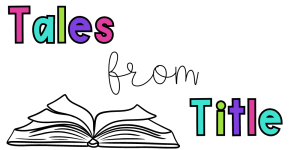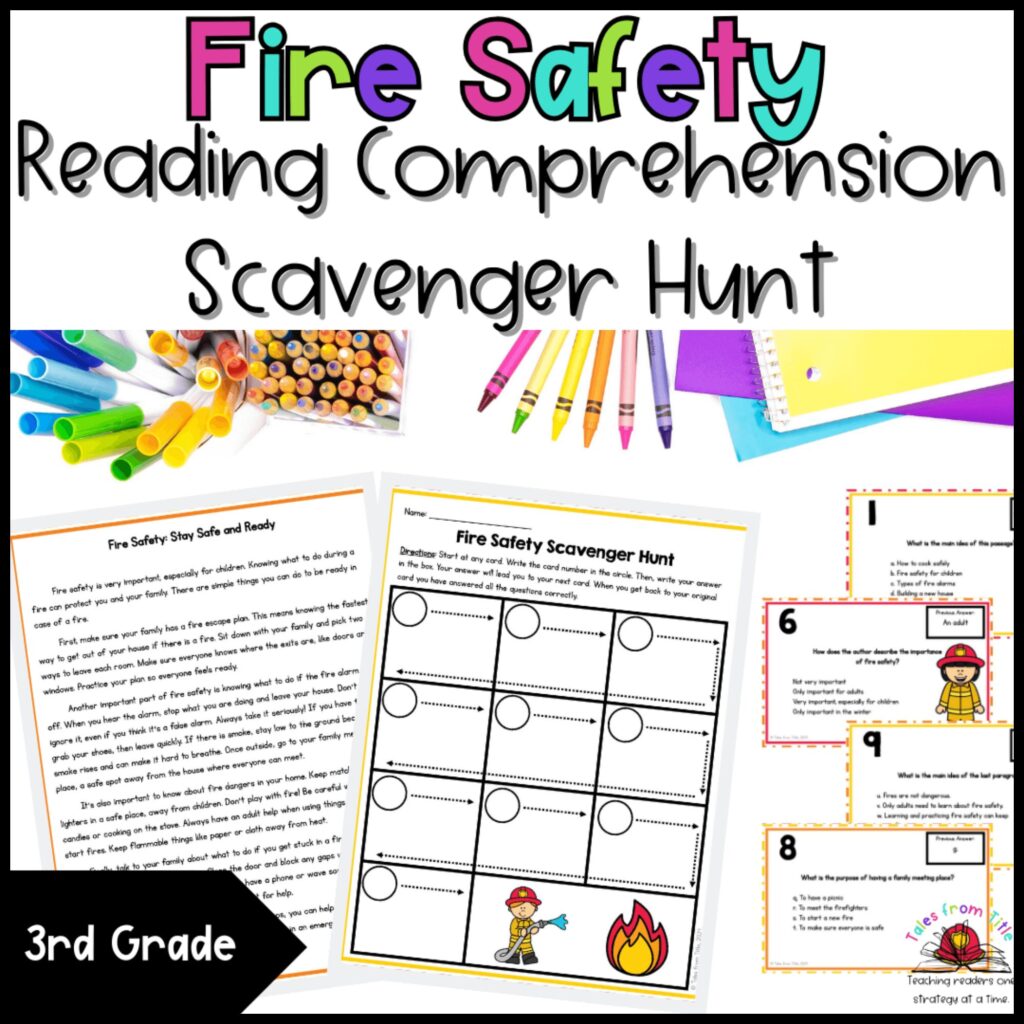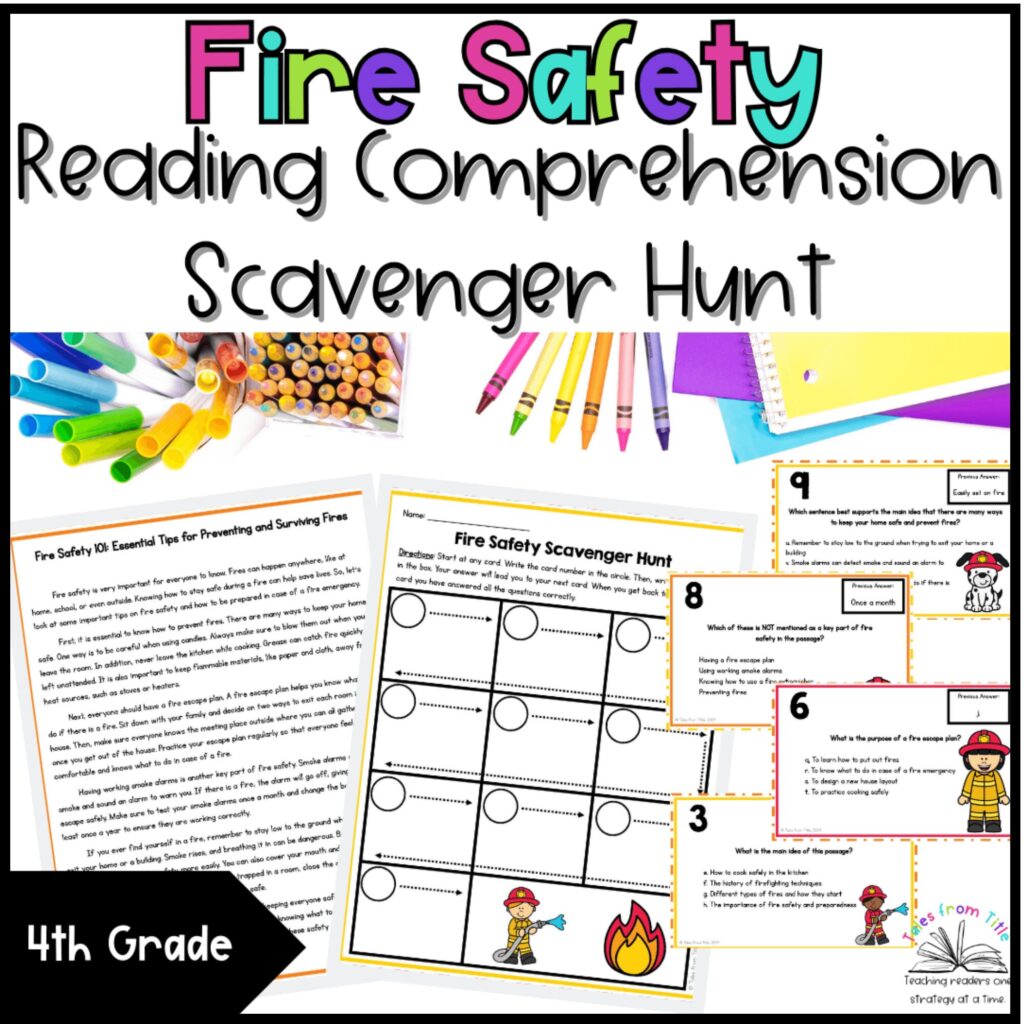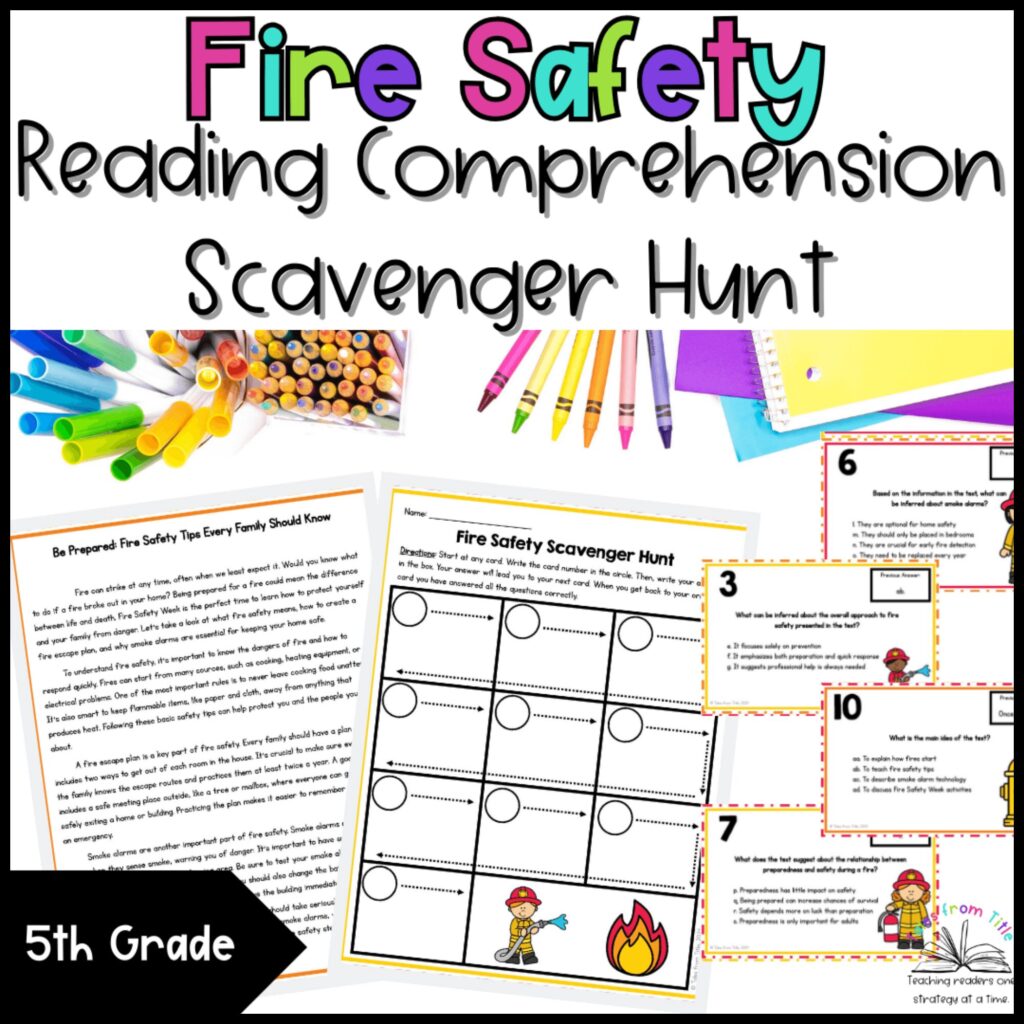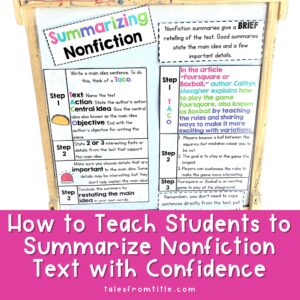There is no denying the demands on today’s teachers are incredibly high. With standardized testing always looming over us, it can be hard to find time for the rich, thematic learning experiences that students love and benefit from. The pressure teachers face to have students perform well on state assessments doesn’t leave much room for creative, engaging activities that foster a deeper connection with concepts and material.
But what if there was a way to bring excitement back into the classroom without sacrificing valuable instructional time? That’s where my Fire Safety Nonfiction Reading Comprehension Scavenger Hunts for 3rd, 4th, and 5th graders come in. These scavenger hunts not only tie into an important theme—Fire Safety Week—but also help students practice nonfiction comprehension skills in a fun, engaging, and interactive way.
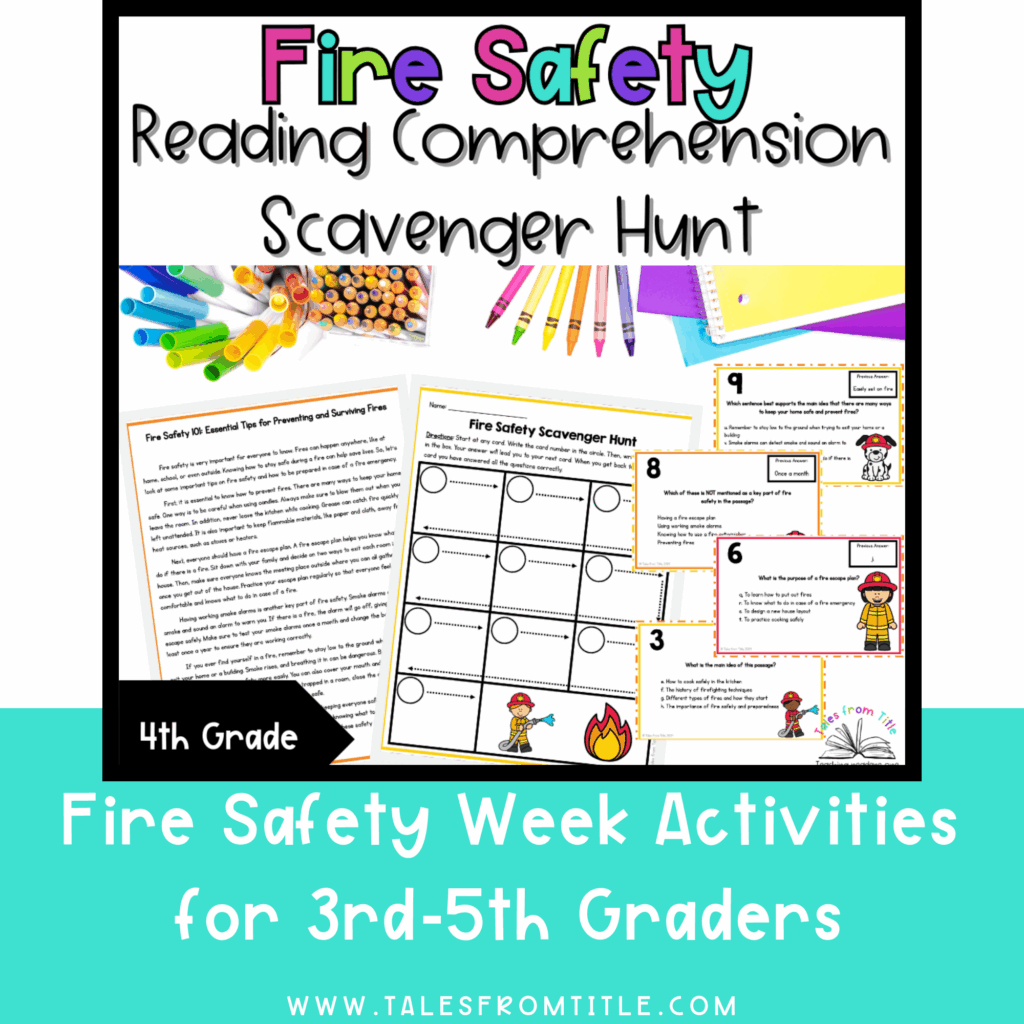
What Are Nonfiction Scavenger Hunts?
Nonfiction scavenger hunts are an awesome way to help students practice reading for a purpose and rereading to find answers or support for their responses. Instead of a traditional worksheet, scavenger hunts encourage movement, collaboration (if students work in pairs or groups), and critical thinking as they actively engage with the material by answering questions and hunting for clues (a.k.a. question cards) around the classroom or school.
Each of my Nonfiction Fire Safety Scavenger Hunts includes a reading passage focused on fire safety, along with question cards that students must answer correctly to find the next question card. If students answer incorrectly, they can’t find the next card, making the activity self-checking. This eliminates grading for you while ensuring that students are thoroughly engaged in learning and applying the comprehension skills you’ve worked so hard to teach them.
How Do Scavenger Hunts Work?
For you, the prep work for a scavenger hunt is super simple. First, print the passage, answer sheet, and question cards. Then, cut the question cards in half and hang them around your school or classroom. You can make the hunt as easy or challenging as you want. Cards can be hung randomly around the room, or you can hide them in less obvious places to make students work harder to find them. That’s it!
This activity works well in small groups, pairs, or as an individual activity, and it’s adaptable for reading centers, sub plans, or whole-class lessons.
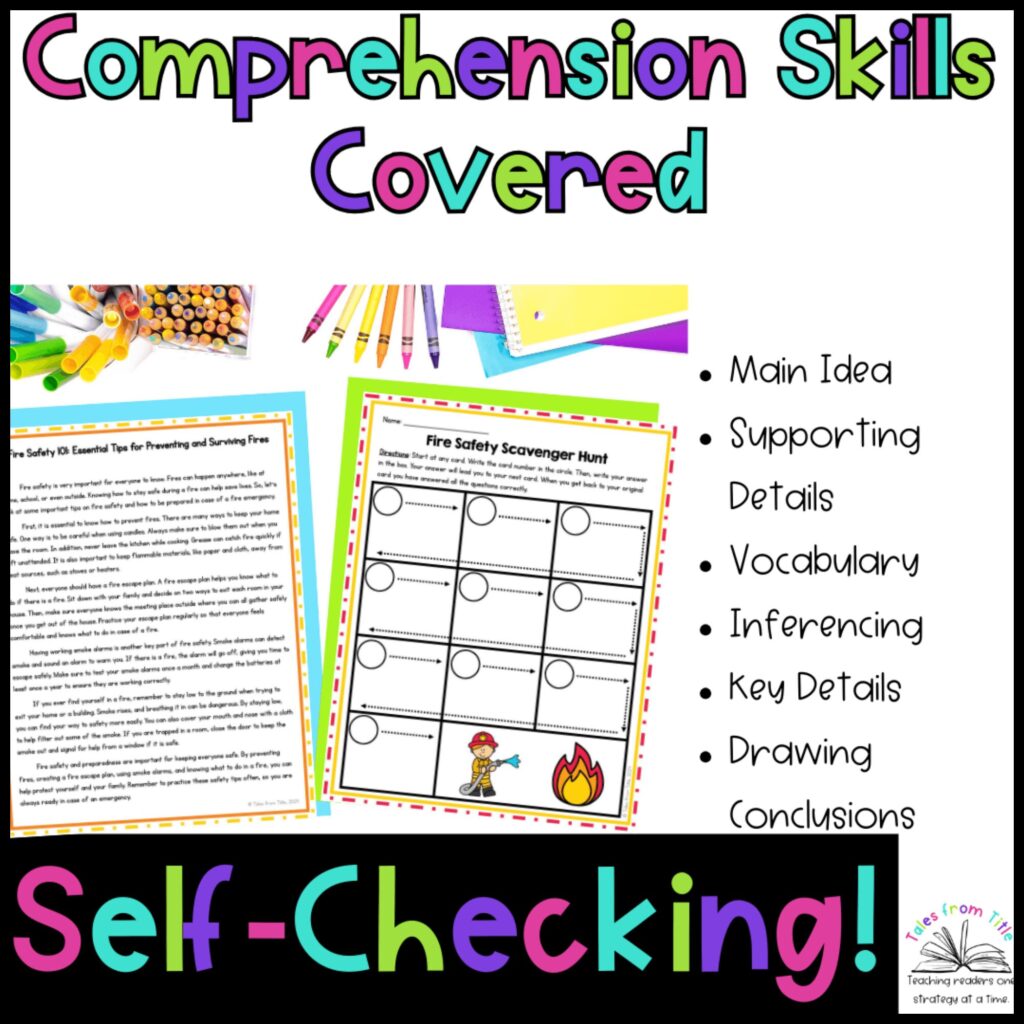
Once the hunt is set up, have students read the passage. Then, give them an answer sheet to record their responses. Make sure they understand they will not answer questions in sequential order! Students can start at any card, and as long as they answer questions correctly, they’ll be led to the next one and eventually back to the card they started with.
Let me give you an example of how this works. Pretend your student starts at card 6.
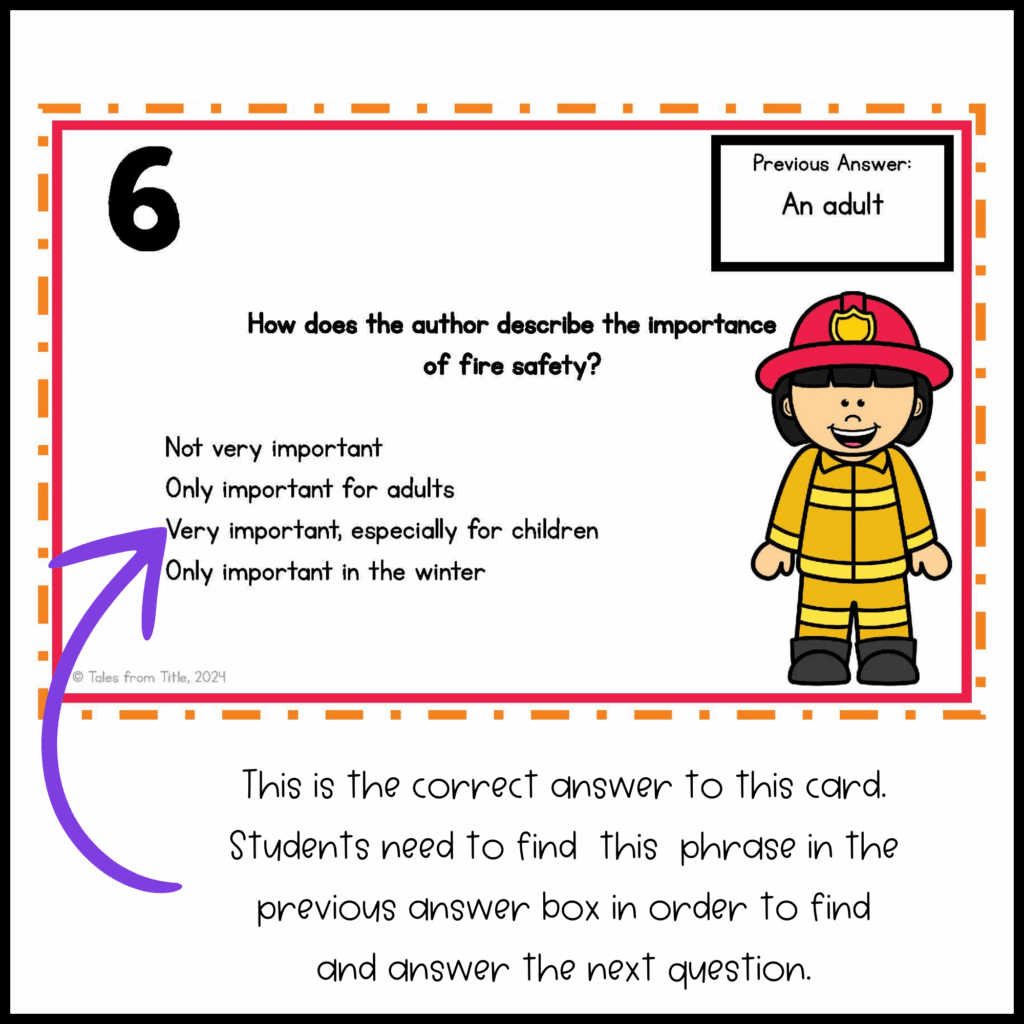
The student would read the question, go back to the passage to find the answer, then record their answer—very important, especially for children—in the first box on the answer sheet. Now, they need to look for the question card that has “very important, especially for children” in the previous answer box. This is card 2.
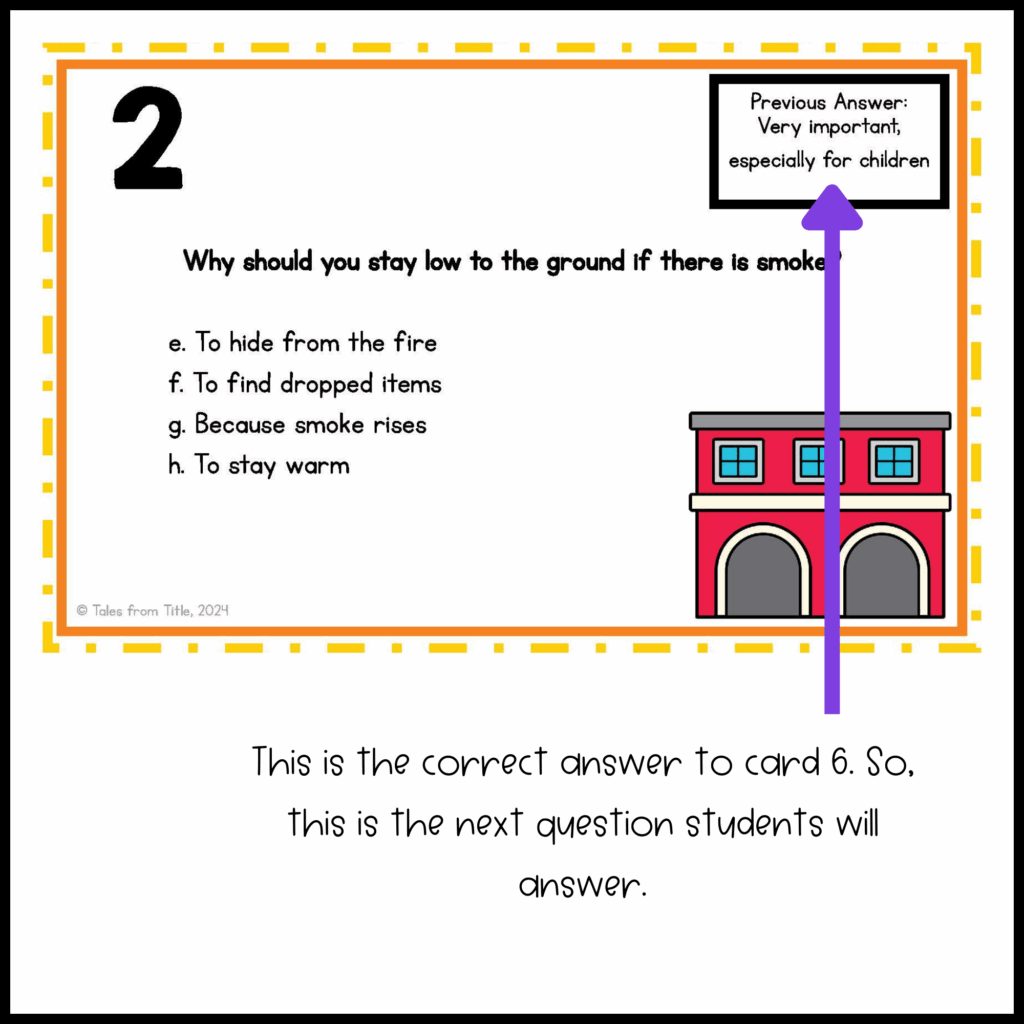
Students continue reading and answering questions in this way until they’ve answered all the question. If at any point they don’t choose the correct answer, they won’t be able to find the next card, which will let them know they need to go back and reread the passage to find the correct answer. Once students reach their last question card, no matter where they started, the correct answer will lead them back to their first card, confirming they’ve successfully completed the scavenger hunt.
What Is Fire Safety Week?
Fire Safety Week takes place from Sunday through Saturday of the week that includes October 9th each year. Why this is such a complex explanation for when it takes place, I don’t know. Couldn’t we just say the second week of October? Maybe because it isn’t always the second FULL week of October, we can’t say that, so the description has to be more complex. 🤷🏼♀️
Anyway, Fire Safety Week began in the United States back in 1925 when Calvin Coolidge signed a Presidential Proclamation making National Fire Safety Week a thing. He did so to reform conditions after 15,000 people had died the previous year due to fires. Since then, Fire Safety Week has been celebrated every year, and unbeknownst to me, it even has a theme each year, with the 2024 theme being “Smoke Alarms: Make Them WORK for You!”
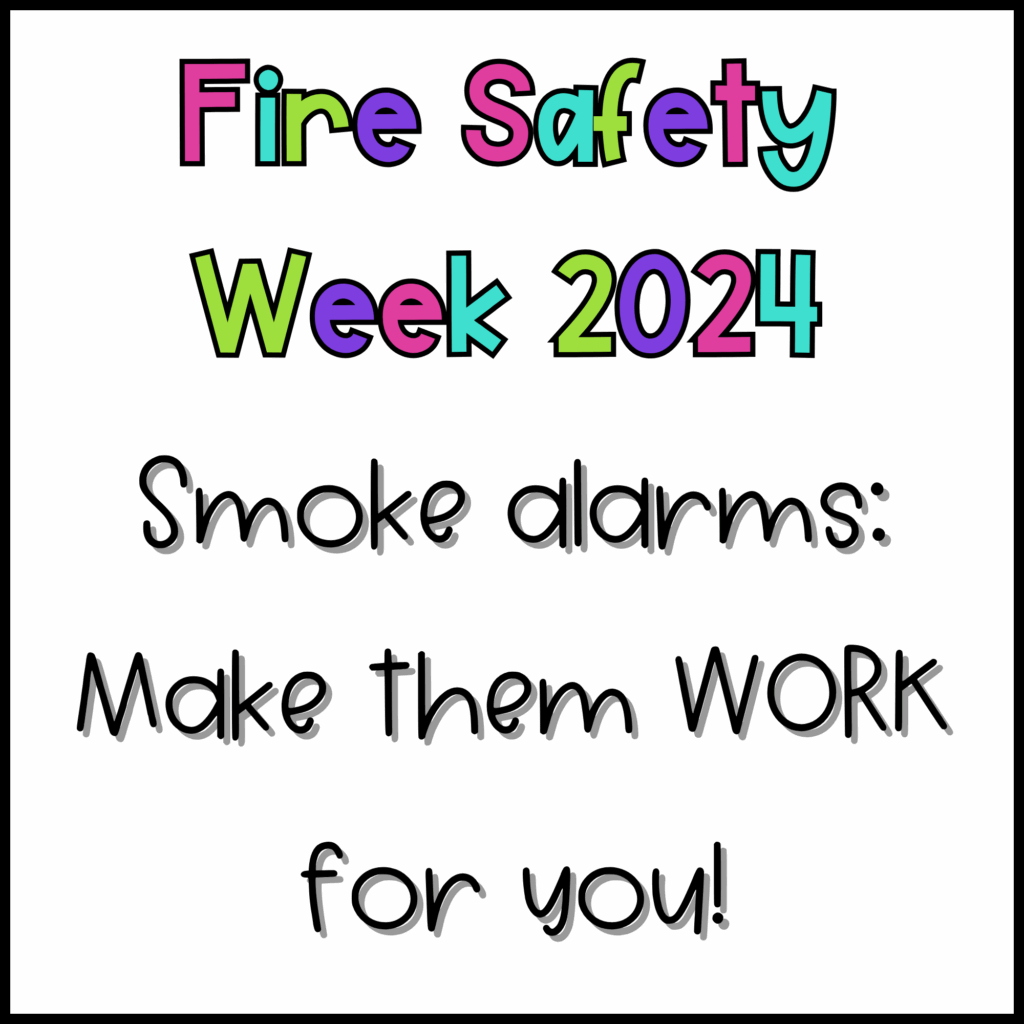
Fire Safety Week is a time for schools and communities to teach students the importance of fire preparedness, covering topics like fire drills, smoke alarms, and creating safety plans at home. While many schools prioritize fire safety lessons and visits from the local fire department during Fire Safety Week, some do not. Other schools only allow primary-aged students to participate in assemblies and activities because they want their older students focused on state standards and covering curriculum at an acceptable pace.
How to Incorporate Fire Safety into Your Reading Lessons Using Scavenger Hunts
You don’t have to sacrifice valuable instructional time to provide your students with fire safety-themed learning during Fire Safety Week. By incorporating the Fire Safety Nonfiction Scavenger Hunt into your reading lessons, you can easily blend essential skills with thematic content. The reading passages, written at a 3rd, 4th, or 5th-grade level, provides students with important fire safety information, while the scavenger hunt questions reinforce comprehension by focusing on main idea, supporting details, making inferences, vocabulary, and understanding key details.
The Benefits for Students
Beyond the fun of getting up and moving around the classroom, the Fire Safety Nonfiction Scavenger Hunt offers several key benefits for students:
- Active Engagement: Completing the scavenger hunt keeps students engaged and excited about learning, rather than passively sitting at their desks doing worksheets.
- Skill Reinforcement: Students practice nonfiction comprehension skills, including locating information in the text, identifying key details, understanding the main idea, and making inferences.
- Self-Monitoring: Since the scavenger hunt is self-checking, students are held accountable for their work and must think critically to successfully complete the activity.
- Collaboration and Teamwork: If done in pairs or small groups, scavenger hunts promote teamwork and discussion, allowing students to collaborate and support one another in finding answers.
- Thematic Learning: Incorporating Fire Safety Week into your lessons helps students make real-world connections, reinforcing the importance of fire preparedness in a meaningful context.
By integrating Fire Safety scavenger hunts into your lessons during Fire Safety Week, you can provide students with engaging and meaningful learning experiences without sacrificing rigor.
Using thematic, interactive activities like these Fire Safety Scavenger Hunts allows you to continue providing engaging, standards-aligned learning experiences, without feeling like you will get in trouble with administration.
Do you incorporate fire safety into your lessons during Fire Safety Week? Drop a comment below to share some of your favorite activities!

